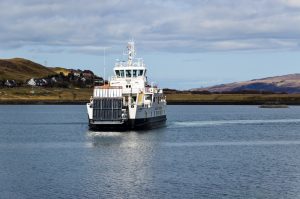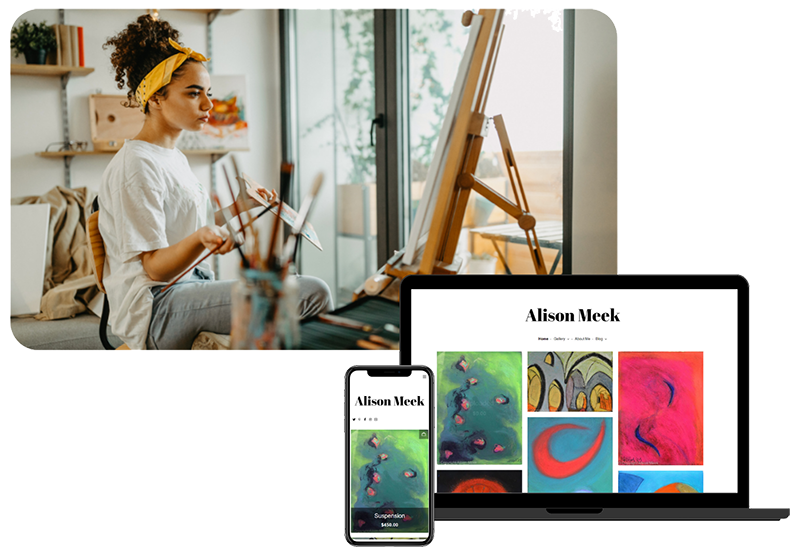
In April 2022, the Intergovernmental Panel on Climate Change (IPCC), a UN-backed, international body of climate scientists, released their latest report on climate change mitigation. The report makes for grim reading. Peppered with phrases such as ‘almost inevitable’, and ‘now or never’, it emphasises the necessity for drastic and immediate action if global emissions are to be reduced by 2025. Without significant commitment from governments and multinationals, combined with coordinated efforts of businesses and communities worldwide, the narrow window of opportunity in which to limit global warming to 1.5C above pre-industrial levels, preventing the most catastrophic consequences of climate change, will swiftly close.
With the year 2025 chillingly close in proximity, reports such as the IPCC’s can leave individuals feeling helpless and utterly overwhelmed. How can studio artists contribute to the much-needed shift toward greater sustainability in the coming years? What practical steps can artists take to immediately reduce their carbon footprint? Several high-profile artists have already made significant pledges toward decarbonisation. Berlin-based Tino Sehgal tells the Gallery Climate Cooalition: “There’s often this hurdle of ‘Oh, I can’t do this, I don’t know anybody else who does this, it’s abstract.’ I think it’s actually very important to get an image of what making these changes is like in practical terms and then realising that making changes is actually an easy thing to do.’”
Icelandic-born Olafur Eliasson has been making climate-conscious art for much of his career. With Ice Watch (2014), Eliasson, in collaboration with geologist Minik Rosing, installed several giant blocks of glacial ice outside the Tate Modern in London. Visitors were invited to interact with the ice up-close, touching or even tasting it, closing the gap between the familiar and the at times abstract reality of melting ice caps. The following year more ice was installed outside Place du Pantheon in Paris during the Cop21 climate summit. Described as a ‘natural doomsday clock’, the chunks of melting ice, imported from Greenland, were intended to highlight the urgent need for a perspective shift on the climate crisis. Olafur Eliasson studio has since pledged to become carbon-neutral within a decade. For his 2020 exhibition at the Museum of Art Tokyo, Sometimes the river is the bridge, work was transported from Berlin via the Trans-Siberian railway, with the studio drafting clauses into contracts that reject air-freight, focusing instead on combining remote installation with travel by land and sea.

The 5 R’s – Refuse, Reduce, Reuse, Repurpose, Recycle.
Launched in London in 2020, Gallery Climate Coalition consists of a group of artists, gallerists and curators committed to providing decarbonisation guidelines for the visual arts sector, as well as promoting a zero-waste approach to art production. Their website offers an emissions calculator that gives a simple breakdown of the primary sources of your personal carbon emissions. Those currently feeling overwhelmed can go back-to-basics by focussing on the 5R’s—refuse, reduce, reuse, repurpose and recycle. A simple step to take is requesting no unnecessary packaging from suppliers and favouring, whenever possible, biodegradable over synthetic materials— the most egregious being polystyrene and styrofoam. And, of course, dreaded single-use plastics—shopping bags, food and beverage containers, wrappers—are to be avoided wherever possible. The damage caused by petroleum-based packaging is difficult to overstate. Plastics are more costly— both economically, socially, and environmentally—than organic materials. Petroleum-based materials can take up to thousands of years to break down. Non-sustainable materials create landfill, which means more pollution, more hazardous waste, more destruction to the health of communities and habitats.
While compostable packaging is the goal, suitable packaging depends on the nature of the work you are creating, and its storage and transportation needs. Due to natural decomposition, organic materials are often unsuitable for long-term storage goals. However, there are organisations working on innovative solutions, developing organic plastics and alternative materials that are biodegradable, durable, and less-carbon intensive. One of these solutions is mycelium. A lightweight alternative to styrofoam, mycelium is like a single-celled yeast that weaves a structure of microscopic fibres from the root of fungi. Combined with agricultural matter such as hemp, wood chips, or psyllium husks, it can be used for purposes as diverse as clothing, plant-based meats, even scaffolding, and can have a shelf-life of up to thirty years in dry conditions. Multinational brands like Ikea have already explored mycelium-based packaging and a number of organisations worth exploring have emerged in recent years to spearhead the shift toward alternative packaging.

Community-Building
Developing strong community bonds is vital for successfully implementing the 5 R’s— awareness of locally-based resources and recycling infrastructure, as well as supporting local equipment rental shops, and independent sellers of art materials. Fostering a collective mindset and seeking out strong creative networks is universally beneficial, but on a practical level it can be a fruitful means of loaning tools, trading equipment, pooling skills, or recommending local suppliers. Connecting to artists in your community lessens the potential of unknowingly throwing something away that might be your neighbour’s windfall. When committing to zero-waste, repurposing and recycling, tighter community bonds means awareness of others needs. And awareness of community need not stop at creative connections— we can also join mutual aid groups, and local meet-ups. Essential too is cultivating greater awareness of our surrounding habitats. Much like the concept of food miles–eating local, seasonal food–with increased environmental literacy we can purposefully implement organic and regional materials into projects.
London art network SPACE writes in its sustainability policy: “Art itself is regenerative, encourages resourceful solutions, and forms an essential part of creating sustainable communities.” Onca Brighton is an arts charity organising workshops, fundraising and advocacy around climate and sustainability. Creative Carbon Scotland offers a green arts portal on its website offering comprehensive toolkits for artists. The Dark Mountain Project hosts workshops that combine creativity with ecological awareness– often exploring topics like poetry, paganism and myth. The Arts and Climate Initiative is based in New York and organises live performances that explore the climate crisis through the lens of storytelling. Julie’s Bicycle is a non-profit partnering with Arts Council England to provide resources for artists, including green tools for measuring energy consumption, as well as webinars and podcasts— ‘The Colour Green’ features conversations with artists and activists of colour exploring the intersection of race and climate justice.

Reconsidering Travel Needs
While increased air travel over the past decades has meant the opportunity to travel with convenience and spontaneity, its impact on the climate has been undeniably devastating. And while topics like slow travel and sustainable tourism might fill travel blogs, the bleak reality remains that significantly reducing flight travel, or avoiding it altogether, is necessary if we are to meet UN guidelines. While transit via the Trans-Siberian railway may be unrealistic for many, particularly emerging artists, much of Europe is well-equipped with train networks, as well as long underused ferry routes which remain fully functioning, if not always particularly accessible. While government funding has gone toward airport development and increased accessibility, many train, bus and ferry routes feel frozen in time in terms of meeting the expectations of 21st century travel. While ferries and buses can be cheap, trains often are not, and the effort involved to avoid flying can often be a deterrent. Travel by land or sea requires forward-planning and time-management. Zigzagging routes to the outer limits of town, or hopping on a bus to catch a train to board a boat might seem arduous and off-putting, especially with art materials in tow, however, greater demand will surely result, eventually, in greater accessibility and investment. In the meantime, Zoom provides a means of remote installation and connecting long-distance in lieu of low-carbon transport.

Getting Outdoors, Conservation Awareness and Rewilding
A meaningful benefit of land and sea travel is that it offers us a more immersive window into the landscapes we inhabit, pass through, and dwell in. Familiarising ourselves with our closest green spaces, lakes, and forests is the simplest way to build environmental consciousness. We are more likely to make sacrifices for the things we hold dear, and we are unlikely to fight for the survival of something without having cultivated a meaningful connection to it. A previous IPCC report found that indigenously owned land resulted in lower carbon emissions, lower rates of deforestation and greater biodiversity than public or privately owned land. In response, it declared the traditional knowledge of indigenous communities to be a vital resource in cutting emissions. Many indigenous communities advocate for stewardship as an essential practice if we are to sustain healthy ecosystems. Now is a time for getting outdoors. Scottish charity Trees For Life offers volunteer opportunities to rewild the Scottish Highlands through reforestation. Go Wild forest school offers online courses in identifying wildlife and tool and fire skills. The Center for Alternative Technology in Wales offers short courses in permaculture, carbon literacy, woodworking and green-building, as well as post-graduate study in sustainable architecture and ecology. As Native American author Robin Wall Kimmerer writes in her memoir Braiding Sweetgrass, “to be native to a place we must learn to speak its language.”






